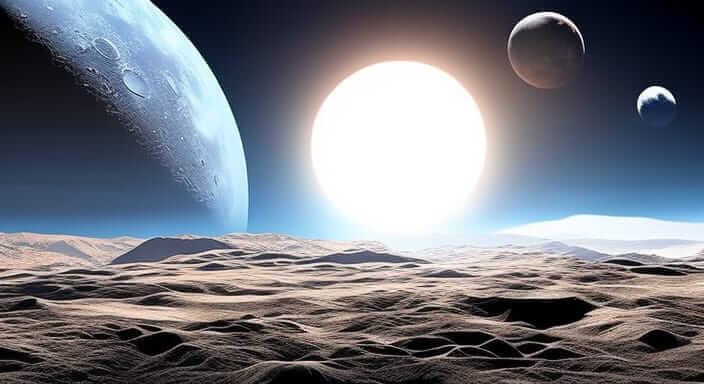Delve into the fascinating intricacies of Earth’s rotation and the concept of a day. Learn why a day isn’t precisely 24 hours, the connection between Earth’s axial movement and its orbit, and how factors like the Moon’s influence and tidal friction contribute to the ever-evolving definition of a day.

While the statement ‘A day is defined as the time it takes for our Earth to complete one full rotation around its axis, which is 24 hours,’ is something most of us are familiar with, it’s not entirely accurate. If we delve a bit deeper, we discover that a full rotation of our planet around its axis actually takes about 23 hours, 56 minutes, and 4.09 seconds. So, why then is a day considered to be 24 hours long?
The 3 Minutes and 56 Seconds Difference:
Before we answer that, let’s think about it for a moment. We’re talking about a difference of 3 minutes and 56 seconds. Could this difference be corrected with periodic adjustments? Certainly not. If that were the case, there would be nearly a 1-hour difference in just 15 days, which isn’t something we observe in our lives. Could it be that the 23 hours, 56 minutes, and 4 seconds duration is rounded up to 24 hours for convenience? That’s not accurate either, as it would alter the definition of a second, which is a precisely defined constant in the SI unit system.
So, Where Does This Difference Come From?
The real difference lies not in the numbers but in the definitions. Simply put, a day is defined as the time it takes for Earth to complete one full rotation around its axis. However, in reality, a day is the time it takes for the Sun to return to the same position in the sky. This duration is indeed 24 hours. (In fact, it would be more accurate to call this a ‘Solar Day’.)
But wait, doesn’t the Sun return to the same position in the sky when Earth completes one rotation around its axis (in 23 hours, 56 minutes, and 4 seconds)? This is the critical question that complicates matters – it doesn’t. This is because as Earth revolves around its axis, it’s also moving along its orbit around the Sun. This prevents the Sun from returning exactly to the same spot by the time Earth completes one full rotation. Let’s try to illustrate this with a simple graph.
As the graph clearly shows, when Earth completes one full rotation around its axis, there is a change in its position relative to the Sun. Therefore, Earth needs to continue its axial rotation by the additional arc shown in red on the graph for the Sun to return to the same point in the sky.
A year is 365 days and 6 hours, or 365.25 days. In one day, Earth completes 1/365.25 = 0.2738% of its orbit around the Sun. The difference between Earth’s axial rotation of 24 hours and its orbitally synchronized Solar Day of 23 hours, 56 minutes, and 4 seconds is: 24 hours – 23 hours 56 minutes 4 seconds = 3 minutes 56 seconds = 236 seconds. In other words, the Sun’s return is delayed by 236 seconds. 23 hours 56 minutes 4 seconds = 86,164 seconds 236/86,164 = 0.2738 Numbers convey the message more effectively than words. In summary, for the Sun to return to the same point in the sky after Earth completes one full rotation around its axis, Earth needs to complete the remaining 0.2738% of its orbital journey around the Sun, which takes about 236 seconds. This additional rotation brings the Solar Day to a total of 24 hours.

Is a Day Really 24 Hours?
It’s important to emphasize that the issue is not as simple as it might appear. Earth’s elliptical orbit around the Sun and its axial tilt result in a Solar Day slightly deviating from 24 hours over the course of a year.
When Earth was first formed, its axial rotation took about 5 hours. During the time of the dinosaurs, a day was probably around 20 hours long. The modern 24-hour day has two main reasons behind its lengthening over time:
The torque created by the gravitational force of the Moon on Earth slows down Earth’s rotation. Friction between the ocean floor and water due to tides caused by the Moon’s gravitational force results in energy loss. In fact, due to these effects, Earth’s rotation is gradually slowing down. Over hundreds of millions of years, Earth’s rotation will become so slow that the gravitational interaction with the Moon will lock the two bodies into a synchronous state, where one side of Earth will always face the Moon. This means one half of Earth will never see the Moon, while the other half will always have the Moon in its sky.
Regardless of whether a day seems long or short to you, don’t forget to enjoy every moment.